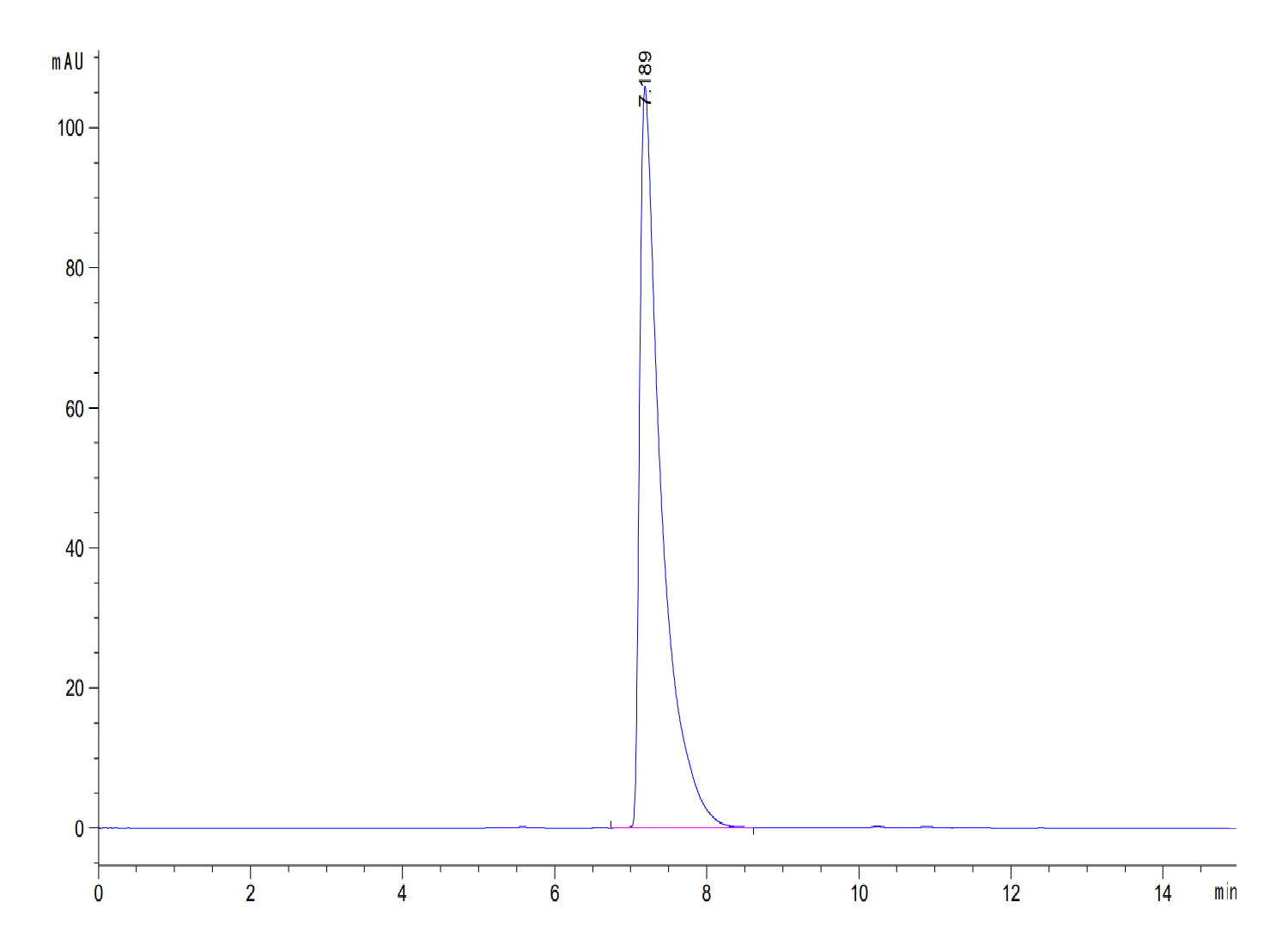| Weight | 1 lbs |
|---|---|
| Dimensions | 9 × 5 × 2 in |
| accession | P97449 |
| express system | HEK293 |
| product tag | C-His |
| purity | > 95% as determined by Tris-Bis PAGE;> 95% as determined by HPLC |
| background | CD13/aminopeptidase N is a widely expressed ectoenzyme with multiple functions. As an enzyme, CD13 regulates activities of numerous cytokines by cleaving their N-terminals and is involved in Ag processing by trimming the peptides bound to MHC class II. Independent of its enzymatic activity, cell membrane CD13 functions by cross-linking-induced signal transduction, regulation of receptor recycling, enhancement of FcγR-mediated phagocytosis, and acting as a receptor for cytokines. |
| molecular weight | The protein has a predicted MW of 103.9 kDa. Due to glycosylation, the protein migrates to 115-130 kDa based on Tris-Bis PAGE result. |
| available size | 100 µg, 500 µg |
| endotoxin | Less than 1EU per μg by the LAL method. |
Mouse CD13/ANPEP Protein 3540
$270.00 – $900.00
Summary
- Expression: HEK293
- Pure: Yes (HPLC)
- Amino Acid Range: Lys69-Ser966
Mouse CD13/ANPEP Protein 3540
| protein |
|---|
| Size and concentration 100, 500µg and lyophilized |
| Form Lyophilized |
| Storage Instructions Valid for 12 months from date of receipt when stored at -80°C. Recommend to aliquot the protein into smaller quantities for optimal storage. Please minimize freeze-thaw cycles. |
| Storage buffer Shipped at ambient temperature. |
| Purity > 95% as determined by Tris-Bis PAGE |
| target relevance |
|---|
| CD13/aminopeptidase N is a widely expressed ectoenzyme with multiple functions. As an enzyme, CD13 regulates activities of numerous cytokines by cleaving their N-terminals and is involved in Ag processing by trimming the peptides bound to MHC class II. Independent of its enzymatic activity, cell membrane CD13 functions by cross-linking-induced signal transduction, regulation of receptor recycling, enhancement of FcγR-mediated phagocytosis, and acting as a receptor for cytokines. |
| Protein names Aminopeptidase N (AP-N) (mAPN) (EC 3.4.11.2) (Alanyl aminopeptidase) (Aminopeptidase M) (AP-M) (Membrane protein p161) (Microsomal aminopeptidase) (CD antigen CD13) |
| Gene names Anpep,Anpep Lap-1 Lap1 |
| Protein family Peptidase M1 family |
| Mass 10090Da |
| Function Broad specificity aminopeptidase which plays a role in the final digestion of peptides generated from hydrolysis of proteins by gastric and pancreatic proteases. Also involved in the processing of various peptides including peptide hormones, such as angiotensin III and IV, neuropeptides, and chemokines (By similarity). May also be involved the cleavage of peptides bound to major histocompatibility complex class II molecules of antigen presenting cells (PubMed:8691132). May have a role in angiogenesis and promote cholesterol crystallization (By similarity). May have a role in amino acid transport by acting as binding partner of amino acid transporter SLC6A19 and regulating its activity (PubMed:22677001). |
| Catalytic activity BINDING 351..355; /ligand="substrate"; /evidence="ECO:0000250|UniProtKB:P15144"; BINDING 387; /ligand="Zn(2+)"; /ligand_id="ChEBI:CHEBI:29105"; /ligand_note="catalytic"; /evidence="ECO:0000255|PROSITE-ProRule:PRU10095"; BINDING 391; /ligand="Zn(2+)"; /ligand_id="ChEBI:CHEBI:29105"; /ligand_note="catalytic"; /evidence="ECO:0000255|PROSITE-ProRule:PRU10095"; BINDING 410; /ligand="Zn(2+)"; /ligand_id="ChEBI:CHEBI:29105"; /ligand_note="catalytic"; /evidence="ECO:0000255|PROSITE-ProRule:PRU10095" |
| Subellular location Cell membrane ; Single-pass type II membrane protein. Note=Also found as a soluble form. |
| Tissues Expressed in the intestinal brush border (at protein level) (PubMed:22677001). Highly expressed in intestinal tract and kidney, present in liver, lymph node, spleen, and brain (PubMed:8103749, PubMed:8805662). Found as well in monocytes, macrophages, dendritic cells, veiled cells and B-cells but not on T-cells and thymocytes (PubMed:8103749). |
| Structure Homodimer (By similarity). Interacts with SLC6A19 (PubMed:22677001). |
| Post-translational modification N- and O-glycosylated.; Sulfated.; May undergo proteolysis and give rise to a soluble form. |
| Target Relevance information above includes information from UniProt accession: P97449 |
| The UniProt Consortium |
Data
 |
| The purity of Mouse CD13/ANPEP is greater than 95% as determined by SEC-HPLC. |
 |
| Mouse CD13/ANPEP on Tris-Bis PAGE under reduced condition. The purity is greater than 95%. |
Publications
Publications
| pmid | title | authors | citation |
|---|---|---|---|
| We haven't added any publications to our database yet. | |||
Protocols
| relevant to this product |
|---|
Documents
| # | ||
|---|---|---|
| Please enter your product and batch number here to retrieve product datasheet, SDS, and QC information. | ||














